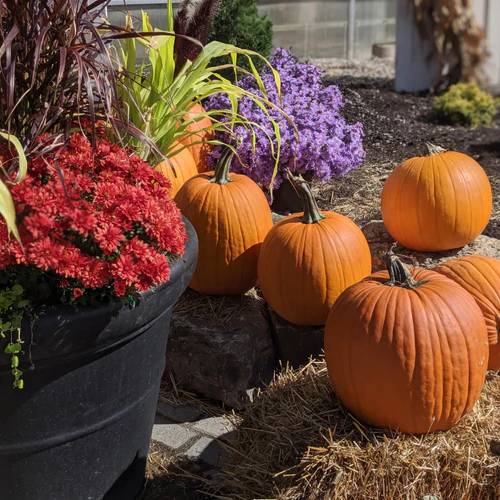
by Wildwood Outdoor Living | Oct 3, 2023 | Monthly Gardening Tips
Welcome to October 2023, where the world of gardening is blooming with endless possibilities! With a wide range of tasks such as pruning, planting, and decorating, this month has something exciting for all garden enthusiasts. We have put together a helpful list of “Fall To-Do’s” to make sure you stay productive and engaged this October, just like a busy bee. Take a look and discover some exciting activities to enjoy during this autumn season.

1.) Once the leaves have fallen, it’s time to show your pond some care. Gently remove the netting and take a moment to clean the bottom of the pond. This will help maintain a healthy and beautiful environment for your aquatic friends.
2.) The ideal time to transplant shrubs or young trees to new locations is during the month of October. This timing ensures that they have enough time to establish their roots before the harsh winter weather arrives. By moving them during this period, you can provide them with the best chance of thriving in their new environment.
3.) Now is the perfect time to explore an exceptional variety of fall bulbs. At Wildwood Outdoor Living, we take pride in offering the widest selection available, both online and in-store. We encourage you to plan ahead for your garden visit, ensuring that you create the ideal growing conditions for your chosen bulbs.
4.) In October, it’s important to show care for your perennials by cutting out any diseased areas. By doing so, you can help protect the overall health of your plants. However, it’s crucial to remember not to compost these diseased parts to prevent further spreading of the disease.

5.) To ensure a healthy lawn in the spring, it’s important to lower the blade on your lawn mower and trim the grass shorter during the fall season. This simple step can help prevent issues like snow mold, a type of fungus, from forming when the weather warms up again. By taking care of your lawn now, you’re setting it up for success in the future!
6.) It’s important to continue watering your trees and shrubs until the ground freezes. This extra care will ensure that they stay nourished and healthy throughout the winter months.
7.) During this time, it would be a great idea to begin taking cuttings of fuchsias and geraniums. By doing so, you can assist your beloved plants in entering a dormant state throughout winter. This will allow them to conserve their precious energy for the upcoming spring season. It’s a gentle way to show your care and ensure their well-being.
8.) To create a safer environment around your home, it’s helpful to trim tall grass near trees and corners. This simple action can discourage small rodents from building nests and potentially causing damage.

9.) In heavy clay areas, it would be beneficial to incorporate gypsum lime and organic compost into the soil. This can help transform the clay into a more workable and fertile soil, allowing for better growth of plants and improved drainage. By making this simple adjustment, you can create conditions that promote healthy plant growth while also caring for the environment through organic methods.
10.) When it’s time to prepare your tender bulbs like dahlia, canna, and gladiola for storage, gently unearth them from the ground. It’s important to handle them with care. Once they have been dug up, carefully wrap them in a damp material to maintain their moisture levels during storage. Find a cool and dark space where you can store these bulbs until they are ready to be replanted again.
11.) To achieve a beautiful and healthy lawn during the fall and winter seasons, it’s recommended to use a lawn fertilizer with a ratio of 6-10-20. For optimal results, make sure to apply the fertilizer earlier in the month, specifically between October 1st and 15th. This will give your lawn ample time to absorb the nutrients and prepare for colder weather.
12.) Discover the delight of gardening right in your own home! Embrace the beauty and tranquility by beginning an herb garden or tending to new houseplants. It’s a wonderful way to bring nature inside and nurture your green thumb.
13.) The autumn season is filled with magical beauty, especially in October. It’s the perfect time to embrace the stunning fall decor! With all the things you’ve cultivated this year, why not consider creating something truly special? You could design a beautiful fall wreath, preserve lovely pressed flowers or even decorate pumpkins to add a touch of charm to your surroundings. The possibilities are endless and I’m sure whatever you create will be absolutely delightful!
No matter what sparks your interest, fall is a wonderful time to indulge in the joys of gardening. There are numerous tasks waiting for you that will keep you happily occupied! We wish you all the best of luck this planting season and look forward to growing with you!
Have a suggestion or question?
Let us know at info@wildwoodoutdoorliving.com.
Sign up here for more blogs dedicated to better gardening!
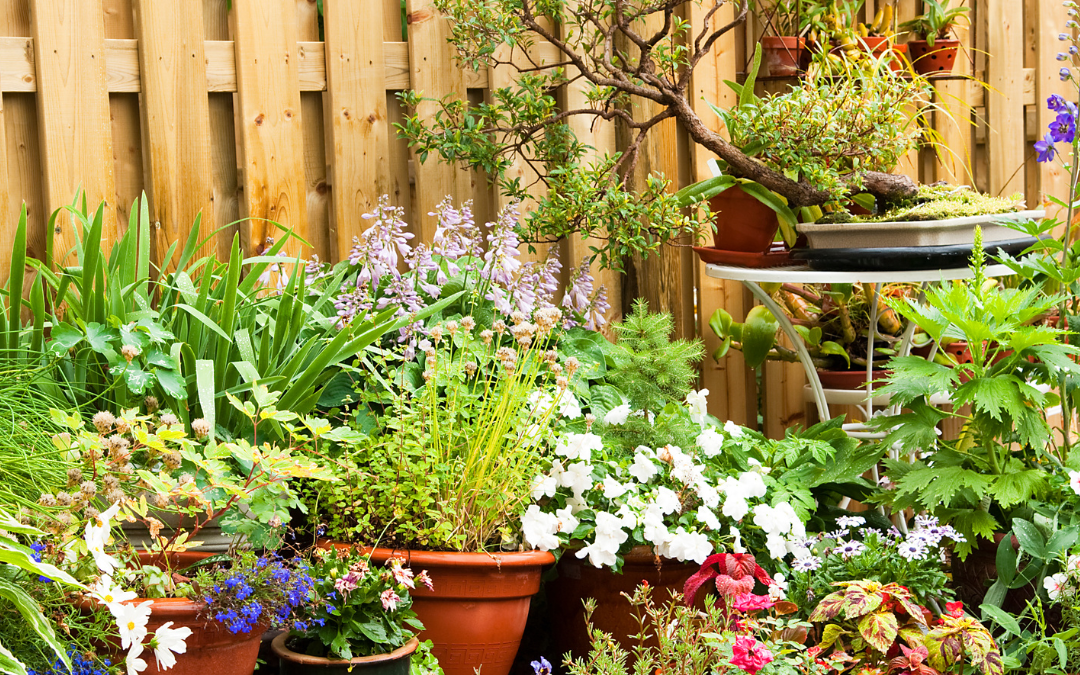
by Wildwood Outdoor Living | Jun 27, 2023 | Monthly Gardening Tips
As the summer heat reaches its peak, July presents an exciting opportunity for garden enthusiasts to immerse themselves in all of their favourite gardening tasks. From tending to vibrant blooms to nurturing luscious vegetables, this month is filled with endless possibilities to keep you busy in your garden. Whether you’re an experienced gardener or just starting out, we’re here to provide valuable insights and tips for your best July garden yet! So grab your tools, put on your gardening gloves, and let’s dive into the world of lush greenery and blooming beauty! In this weeks blog, 2023 July Gardening Tips!
July Plant Care Tasks

1.) Boost the growth of your long-blooming perennials by applying a high-quality all-purpose fertilizer. This essential step will ensure that your plants receive the necessary nutrients they need to thrive and produce stunning blooms for an extended period of time.
2.) When summer-bearing raspberries have completed their fruiting cycle, trim down the canes that produced the berries.
3.) Harvest your garlic and shallots promptly once the majority of the tops have withered away. This ensures that you get the best flavor and freshness from your crops.
4.) Maximize your vegetable yield by planting second and third crops after harvesting. Opt for late varieties of leafy greens, cabbage, cauliflower, and broccoli to ensure a continuous supply of fresh produce throughout the growing season!
5.) Protect your larger growing perennials from rain and wind damage by staking them securely. This simple yet effective technique ensures that your plants are well-supported and can continue to thrive even in adverse weather conditions.
6.) Don’t miss out on the opportunity to fill your garden with vibrant colors! It’s not too late to plant annuals and enjoy a stunning display of blooms.
7.) Don’t forget to remove any dead or diseased foliage, as this will further contribute to the overall well-being of your garden.
8.) Trimming your annual herbs is a smart choice if you want to enjoy a second harvest. By pruning them properly, you encourage new growth and ensure a bountiful yield for your culinary endeavors.
9.) Enhance your cooking skills by utilizing garlic scapes! Not only will this culinary technique add a new layer of flavor to your dishes, but it will also promote the growth of delicious bulbs.
10.) Secure your berry harvest by picking them before the local wildlife discovers a tasty treat. Enjoy the fruits of your labor without having to share with our feathery and furry friends!
Seeds To Sow In July

July is a great time to start planting several types of seeds, especially in areas with mild winters. These varieties not only offer the opportunity for a bountiful harvest in the fall and winter but also provide the option to enjoy them as delicious and tender baby vegetables and more, sooner. To keep your garden growing with a constant supply, try check out our list of great seeds to sow now, below.
| South Central, BC |
Arugula, Beans, Beets, Broccoli, Brussels, Cabbage, Carrots, Celery, Eggplant, Endive/Radicchio, Kale, Lettuce, Melons, Onions, Pac Choi, Peas, Peppers, Rutabaga, Swiss Chard, Turnips |
| Coastal, BC |
Arugula, Beans, Broccoli, Beets, Cabbage, Carrots, Cauliflower, Celery, Cress, Endive/Radicchio, Kale, Kohlrabi, Leeks, Lettuce, Melons, Mustard, Onions, Pac Choi, Peas, Parsnips, Rhubarb, Rutabaga, Spinach, Swiss Chard. |
| Canadian Prairies |
Arugula, Beans, Beets, Broccoli, Brussels, Cabbage, Carrots, Cauliflower, Eggplant, Fennel, Kale, Kohlrabi, Lettuce, Melons, Onions, Pac Choi, Peas, Peppers, Rutabaga, Swiss Chard, Tomatoes, Turnips. |
| Southern Ontario |
Arugula, Beans, Beets, Broccoli, Brussels, Cabbage, Carrots, Cauliflower, Endive/Radicchio, Fennel, Kohlrabi, Leeks, Lettuce, Melons, Mesclun, Mustard, Onions, Pac Choi, Parsnips, Peas, Peppers, Purslane, Radish, Rhubarb, Swiss Chard, Turnips. |
| Central Ontario |
Arugula, Beans, Beets, Broccoli, Brussels, Cabbage, Carrots, Cauliflower, Endive/Radicchio, Kale, Kohlrabi, Leeks, Lettuce, Melons, Mustard, Onions, Pac Choi, Parsnips, Peas, Peppers, Purslane, Radish, Rhubarb, Rutabaga, Swiss Chard, Turnips, |
| Prairies |
Arugula, Beans, Beets, Broccoli, Brussels, Cabbage, Carrots, Cauliflower, Eggplant, Fennel, Kale, Kohlrabi, Lettuce, Melons, Onions, Pac Choi, Peas, Peppers, Quinoa, Rutabaga, Swiss Chard, Tomatoes, Turnips |
Pond Care for July

1.) Ensuring the well-being of your fish is crucial, especially during hot weather. By regularly cleaning the filters in your pond features and adding aeration, you can maintain optimal conditions for their survival. Trust me, taking these simple steps will help keep your fish alive and thriving!
2.) Be vigilant when it comes to pests that can infest your water plants, such as water lily aphids, beetles, and snails. These critters can cause significant damage if not detected and controlled promptly. Stay on top of their presence to ensure the health and beauty of your water plants.
3.) Boost the growth of your waterlilies by providing them with essential fertilizers. By nourishing these beautiful aquatic plants, you can ensure their health and vibrant blooms throughout the season. Don’t miss out on this opportunity to enhance the beauty of your garden or pond with thriving waterlilies.
4.) Trimming back overgrown plants is essential to promote their health and vitality. By pruning, you can encourage new growth, prevent disease, and improve the overall appearance of your plants.
Lawn Care for July

1.) In order to maintain a healthy and vibrant lawn during hot weather, it is crucial to properly water it and make adjustments to your lawn mower. Be sure to water your lawn thoroughly, allowing the water to penetrate deep into the soil. Additionally, consider raising the blade on your lawn mower for a higher cut, as this can help protect your grass from heat stress and promote stronger growth.
2.) Transform your lawn care routine by saving grass clippings for mulch. This simple step not only helps to keep your lawn cool but also provides essential nutrients, ensuring a healthy and vibrant yard. Plus, it’s a sustainable way to reduce waste and nourish your lawn naturally.
3.) Avoid fertilizing during the peak of summer to yield better results for your lawn or garden. By withholding fertilizer during this time, you can promote healthier growth and prevent stress on your plants. This practice will ensure that nutrients are used efficiently and effectively, resulting in a lusher and more vibrant landscape.
More to Do This July In The Garden
Looking to do more in your garden this July? Look no further than ‘Accent Trees and Shrubs’ presented by our very own President, Gord Nickel, on Chek News’ Get Up and Grow, below!
Have a suggestion or question?
Let us know at info@wildwoodoutdoorliving.com.
Sign up here for more blogs dedicated to better gardening!
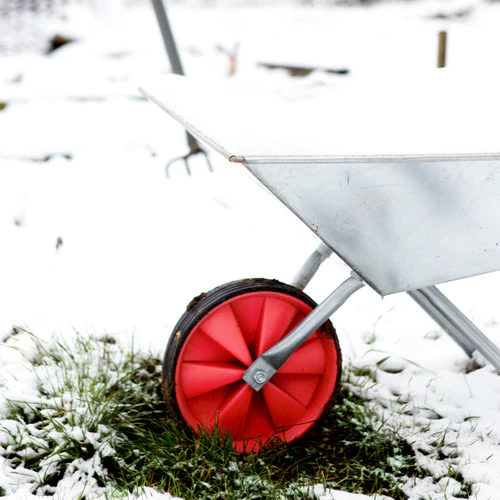
by Wildwood Outdoor Living | Feb 5, 2023 | Monthly Gardening Tips
Welcome to a new year in the garden! If you’re like us, you must be itching to use all the gifts you got for the garden this year. But who says you have to wait until the spring to get growing? In this week’s blog, we’re here to share everything we can think of to get you all caught up on your gardening to-do’s so that you can dig right in when the soil is warm and ready!
Lawn & Pond

What lawn? The one buried under four feet of snow, or the one soaking up the mud?! Alright, chances are there is little you can do for your lawn in the month of January.. So why not learn a few handy tips for growing the green grass on your side of the fence? Here are a few of our favourite green-grass tips for the 2023 growing season and some important things to do for your pond this month.
 |
Understand your lawn’s lifecycle! The government of Canada has a great article available to help you better understand your lawn, so you can to the root of any issue! Check it out here. |
 |
Before it’s too late, protect animals and insects that help your lawn flourish by reducing insecticide and fungicide use. Only apply when necessary. |
 |
While the snow melts away, look for puddles in your lawn and mark them as areas that need proper drainage for when the soil warms up. |
 |
Instead of applying seed after seed in high traffic-areas, consider how your lawn might look with patio stones or mulch instead. |
 |
To be the first on the list, try scheduling any necessary pond maintenance, such as cleaning now before the waiting list leaves you last in line. |
 |
If you run your pond pump during the winter, raise it onto a ledge in the pond to recirculate only the top layer of water. |
 |
Watch water levels, as ice can cause overflow and cause damage to surrounding fixtures or plants. |
 |
There are two key elements to helping your pond fish survive the winter. The first is to ensure your fish don’t freeze, and the second is to ensure they’re getting adequate oxygen. To do this, you’re going to want to have a Pond Aerator or Aqua Jet Pump. Both will create a more stable environment for your fish by increasing air circulation, preventing your pond from freezing and providing your fish with the oxygen they need to survive while preventing unwanted gas build-up. |
 |
Add cold-water beneficial bacteria. |
 |
If keeping your pond running during the winter, add pond de-icer. |
 |
Due to their natural ability to hibernate, you must not feed your fish during winter. Their bodies adapt to survive such cold temperatures by lowering their metabolisms and using their energy to stay moving instead of digesting. Feeding your fish during this process will likely cause damage or death by choking or toxicity. |
 |
If your pond is already frozen, do not break the ice. Breaking into a frozen pond could be deadly for fish, either by striking them or stunning them from the vibrations. |
 |
To prevent damage, turn off any water fixtures like waterfalls. |
Plants & More!

If you’re an indoor grower, we suspect you might have collected a few extra companions to keep you company over the winter months. If not, that’s okay too. January can be a great time to planning, purchasing, sowing and even indoor ponding. Below we’ve detailed a few of our favourite things to do for January when it comes to plants—looking to try something new and exciting? See what our President Gord Nickel has to share in the Check News segment ‘Indoor Fountains and Peace Lily Plants’ below.
 |
Pre-orders for vines are now open! Be the first to pick your favourite vine plants before they’re gone! Don’t forget to check out all the new varieties for 2023! |
 |
Looking to try something new this year? You’re in luck! January is the busiest month for us in the seed department. With hundreds of need seeds trickling in each week. They’re ready to order and ship here! |
 |
Spring Bulbs and Fruits are ready for pre-orders! Lilies, Dahlias, Berries, Kiwis, Strawberries and much more! |
 |
If you can’t tell, January is a great time to plan your garden. If you haven’t already, we recommend planning out your space so that you don’t over shop, or under-plan! Whether you’re a balcony gardener or have your own yard, the more efficient you can be with your space, the more plants you can plan for! |
 |
For indoor plants, be sure to do your research on whether your plants water requirements. Check their soil often to see if the indoor heat is drying them out too much, if so re-locate to a more humid room. If placed near a window, check for frost bite and consider relocating. |
 |
Remove heavy snow fall from branches as the weight can cause damage which will invite unwanted pests and disease. |
 |
Continue composting—everything you save now with warm up in no time in the spring. |
 |
Keep feeding birds to help them during harsh winters. |
Have a suggestion or question?
Let us know at info@wildwoodoutdoorliving.com.
Sign up here for more blogs dedicated to better gardening!
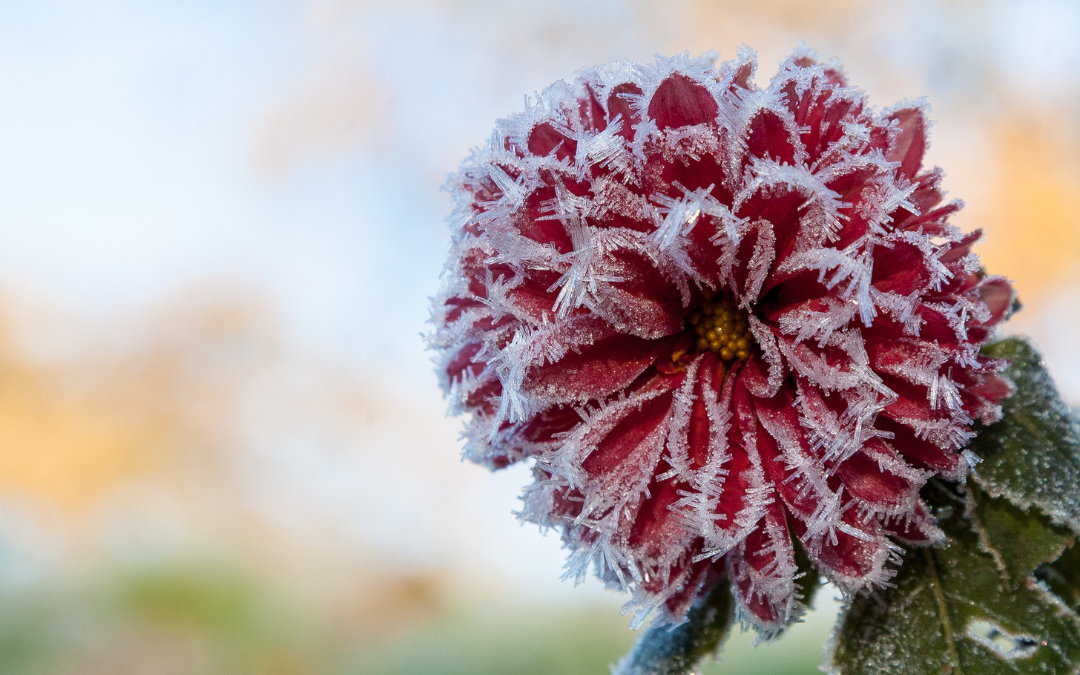
by Wildwood Outdoor Living | Nov 28, 2022 | Monthly Gardening Tips
December?! When did that happen? Well, folks, whether you’re a seasoned gardener or just getting started, December can be a busier month than you might expect. After all, preparing for your best growing season yet takes plenty of work and preparation. That’s why in this week’s blog, we’re here to share a handy to-do list to keep you busy this December.
Lawn & Pond

 |
If you run your pond pump during the winter, raise it on to a ledge in the pond to recirculate only the top layer of water. |
 |
Watch water levels, as ice can cause overflow and cause damage to surrounding fixtures or plants. |
 |
There are two key elements when it comes to helping your pond fish survive the winter. The first is to ensure your fish don’t freeze and the second is to ensure they’re getting adequate oxygen. To do this, you’re going to want to have a Pond Aerator or Aqua Jet Pump. Both will create a more stable environment for your fish by increasing air circulation which will prevent your pond from freezing and provide your fish with the oxygen they need to survive while preventing unwanted gas build-up. |
 |
Add cold-water beneficial bacteria. |
 |
If keeping your pond running during the winter, add pond de-icer. |
 |
Due to their natural ability to hibernate, you must not feed your fish during the winter months. To survive such cold temperatures their bodies adapt by lowering their metabolisms and using their energy to stay moving, instead of digesting. Feeding your fish during this process is likely to cause damage or death by choking or toxicity. |
 |
If your pond is already frozen, do not break the ice. Breaking into a frozen pond could be deadly for fish either by striking them or stunning them from the vibrations. |
 |
To prevent damages, turn off any water fixtures like waterfalls. |
Plants

 |
Try growing popular varieties of indoor forcing bulbs are Paper White Narcissus, Amaryllis & Prepared Hyacinth! They need approximately seven weeks to bloom. |
 |
Watch for the first Christmas rose (Helleborus niger) blossoms outdoor and Chinese witch hazel (Hamamelis Mollis) branches can be brought indoors for fragrant blooms. |
 |
Poinsettia care: Remember the 3 M’s. Moderate bright light, moderate watering and moderate temperature. Avoid access to hot or cold areas. |
 |
Protect fragile plants by staking, wrapping and mulching. Such as dahlias, trees, azaleas and rhododendrons. |
 |
With proper care, a real Christmas tree should last 5 weeks or longer, making the first week of December the perfect time to put up a real Christmas tree. Remember to water the root ball and spray the branches with “wilt proof” to prevent excess drying. If the weather is severely cold after Christmas, acclimatize the tree by hardening off in stages. |
 |
Do not cut holly while the weather is freezing. This will make the berries black. Fresh evergreen boughs can be cut anytime to maintain a fresh supply indoors. Spruce, balsam and cedar boughs will last the longest. |
 |
The best selection of spring bulbs is available now. Wildwood Outdoor Living has the largest selection around, online and in-store! Be sure to plan out your garden ahead of your visit to make sure you have the right growing conditions for your bulb choices. |
Miscellaneous

 |
Clear gutters of all debris to prevent damage and ensure proper drainage for spring. |
 |
Keep feeding birds to help them during harsh winters. |
 |
Continue composting, everything you save now with warm up in no time in the spring. |
 |
Remove heavy snow fall from branches as the weight can cause damage which will invite unwanted pests and disease. |
Looking for more to do this December? Check out the latest episode of Get Up and Grow with our President, Gord Nickel for a little bit of indoor inspiration, below.
Have a suggestion or question?
Let us know at info@wildwoodoutdoorliving.com.
Sign up here for more blogs dedicated to better gardening!
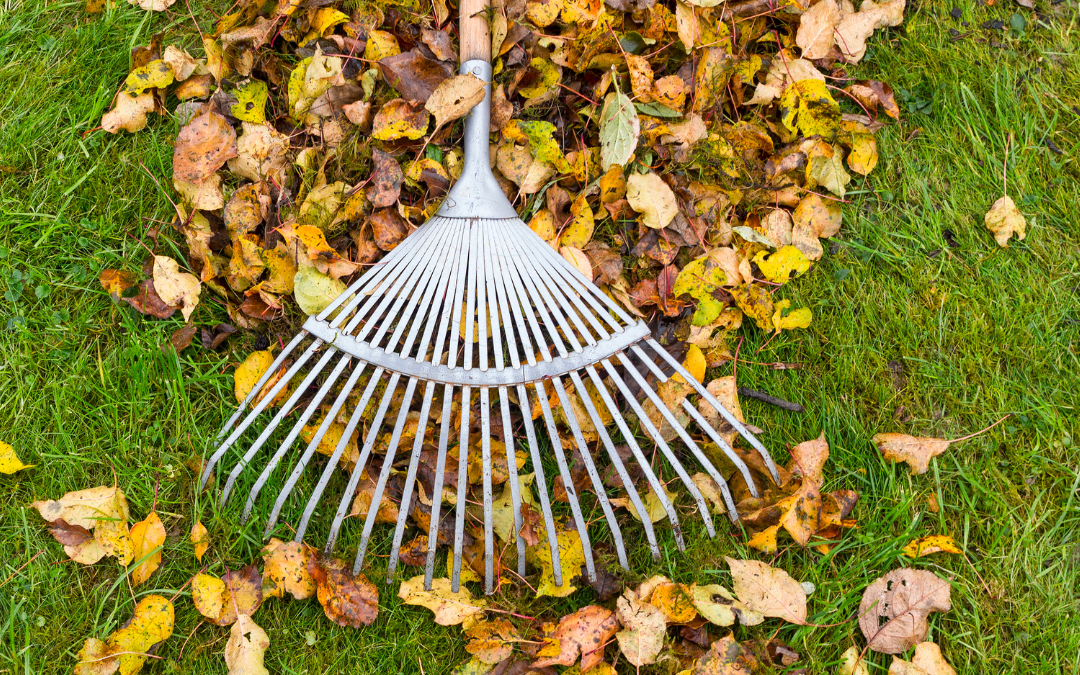
by Wildwood Outdoor Living | Oct 30, 2022 | Monthly Gardening Tips
It’s November 2022 and another beautiful gardening season is coming to a close, but not just yet! There is lots you can do in November to improve your garden for next year. Check out our handy list of November to-do’s to keep you growing and outside before snowfall in this week’s blog November Gardening Tips!
Lawn & Pond

 |
If you run your pond pump during the winter, raise it on to a ledge in the pond to recirculate only the top layer of water. |
 |
Remove pond netting and clean the bottom of the pond after the leaves have fallen. |
 |
Clean the skimmer basket. Check less often after all the leaves have fallen. |
 |
Trim waterlilies two inches above the crown and move to a deeper part of the pond. |
 |
Add cold-water beneficial bacteria. |
 |
If keeping your pond running during the winter, add pond de-icer. |
 |
Last chance to apply fertilizer to your lawn! |
 |
Maintain a clean lawn by removing leaves, toys and tool to keep it healthy. |
 |
As long as the grass is growing, keep mowing! |
Plants
Miscellaneous

 |
Tie up cypress and globe cedar trees so heavy snows will not destroy their shape. |
 |
Construct a comport bin and create your own organic rich soil with garden refuse and leaves. Use Rot-it to quicken the process. |
 |
All your bulbs should be dusted with sulfur or bulb dust prior to storing them away. |
 |
Before storing all your tools, use rubbing alcohol to disinfect and clean them. This will prevent rust and disease. |
Looking for more to do this November? Check out the latest episode of Get Up and Grow with our President, Gord Nickel to learn a few helpful tips for planting fall bulbs below!
Have a suggestion or question?
Let us know at info@wildwoodoutdoorliving.com.
Sign up here for more blogs dedicated to better gardening!

by Wildwood Outdoor Living | Sep 28, 2022 | Monthly Gardening Tips
It’s October 2022 and in the world of gardening there’s plenty to do! From pruning to planting and of course decorating! October offers a variety of fun activities to keep us gardeners busy and soaking up as much of the outdoors as we can. To keep you busy as a bee this October, check out our hand list of “Fall To-Do’s” below!
Lawn & Pond

 |
Lower the blade on your lawn mower to keep grass cut shorter for fall. Keeping your lawn shorter in fall will prevent fungus like snow mold from forming in the spring. |
 |
Remove pond netting and clean the bottom of the pond after the leaves have fallen. |
 |
Plant seed while the ground isn’t frozen and the soil is moist! |
 |
Keep all toys, tools and furniture off your lawn to allow it to breath and take in as much sunlight as it can. |
 |
Add cold water bacteria to ponds to maintain healthy a healthy ecosystem while temperatures cool off. |
 |
Remove all dead pond foliage to prevent bad bacteria build up. |
 |
Reduce feeding your pond fish to once a day to start their hibernation process. |
 |
Switch pond food to cold water fish food pellets. |
 |
Move waterlilies indoors if tropical. Relocate to deeper waters if hardy. |
Plant Care

 |
Divide perennials like Lilies, Hostas, Peonies, Bearded Iris, Oriental Poppies four to six weeks before the first frost. |
 |
Mulch! A great way to keep your plants safe over the winter is to protect them from frost and debris by mulching. |
 |
Apply Fall & Winter lawn fertilizer 6-10-20. For the best results, be sure to apply your fertilizer earlier in the month, between October 1st-15th. |
 |
Prune out all dead, diseased and dying branches and leaves off shrubs and trees. |
 |
Apply dolomite lime to prevent the soil from becoming too acid over the winter months. If the PH level is too high, your grass won’t be able to absorb nutrients properly. |
 |
Weeding is more important now than ever! Many weeds establish their roots during late summer/early fall. To prevent weeds for the spring, weed your gardens in the fall. |
 |
If you haven’t yet, be sure to bring your tropical plants indoors! Don’t forget to check them over for pests before hand, so you don’t bring them in too. |
Flowers

 |
Plant fall bulbs and fall perennials now, for beautiful spring blooms! |
 |
Start taking fuchsias and geranium cuttings. This will allow your plants to become dormant during the winter, saving their energy for Spring. |
 |
Check your local nursery for decorative displays of Asters, Coneflower, Sunflowers, Mums, Heathers and more! |
 |
Check your zones to see what is best to sow in October! |
 |
The best selection of fall bulbs is available now. Wildwood Outdoor Living has the largest selection around, online and in-store! Be sure to plan out your garden ahead of your visit to make sure you have the right growing conditions for your bulb choices. |
Vegetables

 |
Begin storing onions, carrots, and beets in dry peat moss or “Beats Peat” to absorb excess moisture and keep them well insulated. This will also prevent small rodents like mice from getting to them. |
 |
Check for fresh veggie starters in store, like radishes, peppers, lettuce, herbs, kohlrabi and more! |
 |
Pumpkins and Squash are ready for harvesting! |
 |
Last opportunity to harvest late-end corn and tomatoes! |
 |
Check your zones to see what is best to sow in October! |
 |
The best selection of fall bulbs is available now. Wildwood Outdoor Living has the largest selection around, online and in-store! Be sure to plan out your garden ahead of your visit to make sure you have the right growing conditions for your bulb choices. |
Looking for more inspiration to keep you busy this October? Check out the latest episode of Get Up and Grow with our President, Gord Nickel to learn how to plant your own Snow Drops and Winter Aconite, below!
Have a suggestion or question?
Let us know at info@wildwoodoutdoorliving.com.
Sign up here for more blogs dedicated to better gardening!



























